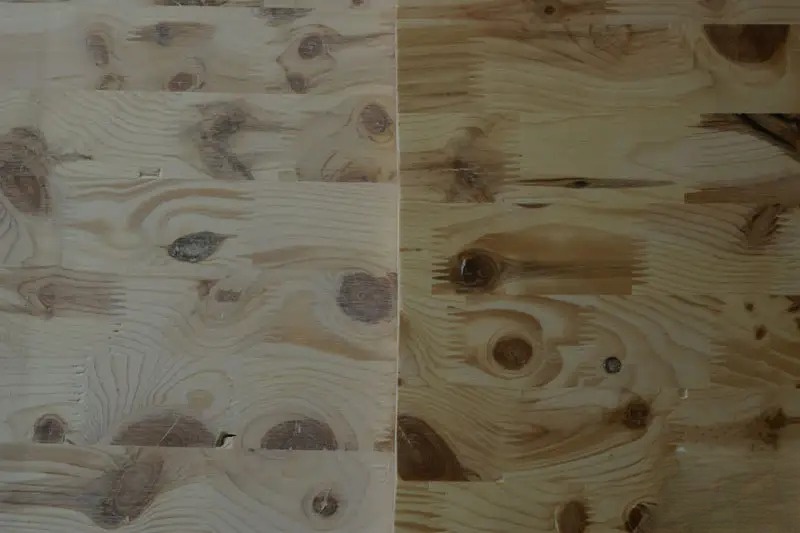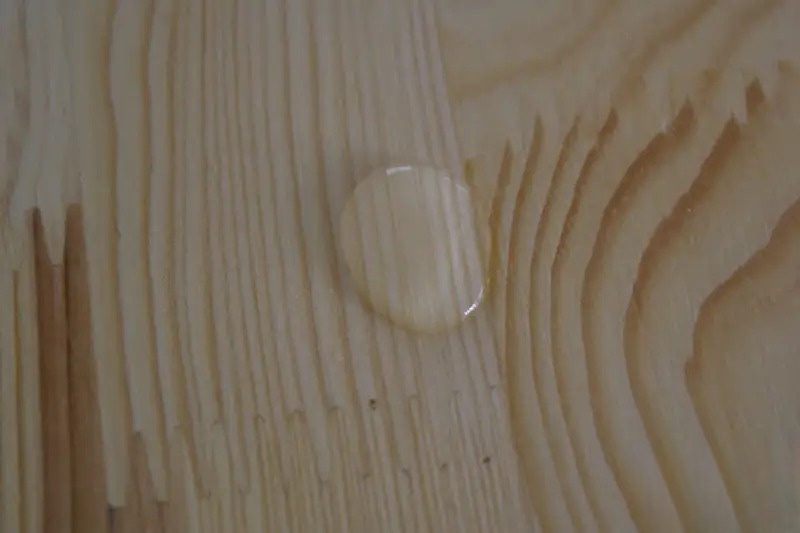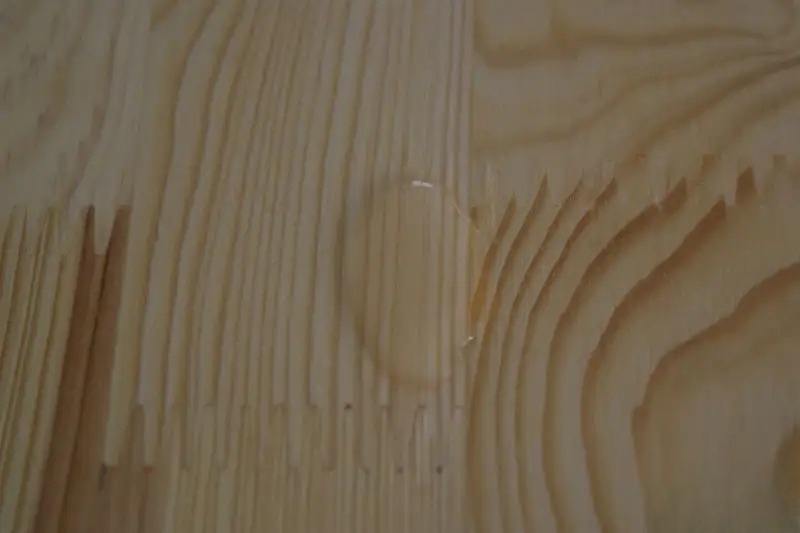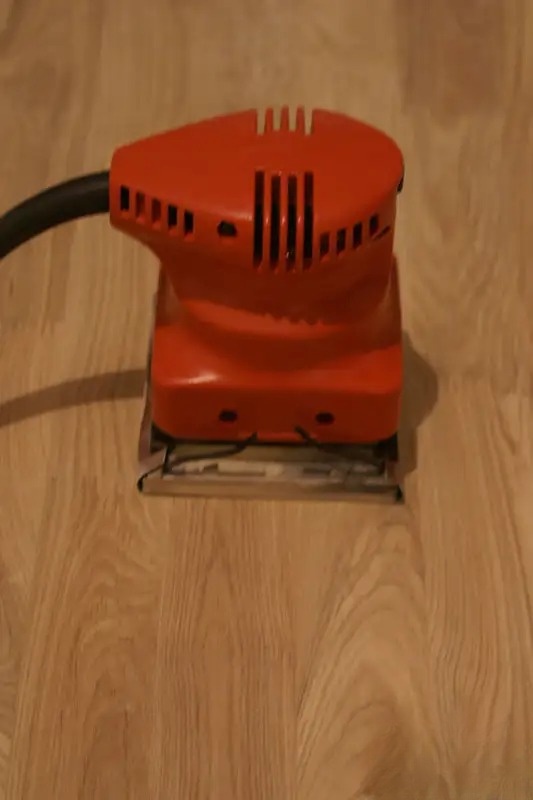Picture: My opinion on painting solid wood furniture!
There are three main types of paints for solid wood furniture:
1. Oil-based wood lacquer
2. Water-based wood lacquer
3. Wood wax oil.
Oil-based wood lacquer: The primary component of oil-based wood lacquer is organic solvents. These contain extremely hazardous substances, such as benzene, toluene, xylene, and free TDI. They are a significant component of volatile organic compounds (VOCs), often referred to as "invisible killers." The odor is pungent! I think this type of paint will gradually fade from use in solid wood home decor! May these toxic substances stay away from us!
Water-based wood lacquer: Composed of 40% water, 30% resin emulsion, 25% pigment fillers, and 5% additives, it's non-toxic, non-polluting, safe, and non-flammable. It's an environmentally friendly product! Its hardness and feel are also excellent, slightly inferior to polyester lacquer but stronger than nitrocellulose lacquer, offering a moderate hardness and feel. Water-based paint is also very wear-resistant and durable, just as durable as oil-based wood paint
. The downside: It's still relatively expensive in the current paint market, so not many people use it! However, I personally believe that water-based wood paint has a very bright future because it taps into the market's key advantage: environmental protection!
Wood wax oil: My solid wood furniture is all made with wood wax oil, so I'll say a little more about it. Please bear with me as I read on! Honestly, the reason I use wood wax oil is not only environmentally friendly, but also economical. You can apply it yourself after buying it, and it's easy, but it does require a lot of physical effort!
Here's a general recipe for wood wax oil: palm wax, sunflower oil, soybean oil, linseed oil, thistle oil, and other natural plant-based ingredients. Therefore, it's environmentally friendly! Of course, some DIY experts make their own wood wax oil using turpentine, white candle wax (beeswax is said to be even better), tung oil, and oil paint. I haven't tested it myself, so I'm not sure if it's feasible, haha! Homemade finishes are not recommended!
Painting Instructions:
1. Sanding: Before building furniture, sand and seal the wood with oil to prevent deformation. Use 100#, 240#, and 360# sandpaper for each sanding step. Many students even use 600# sandpaper for a final sanding, which is even better! I don't think it's necessary. Of course, the smoother the finish, the better, but human energy is limited! To save energy, I didn't use a 2-yuan sandpaper holder. Instead, I bought two electric sandpaper machines at a power tool store. They work great (pay attention to the tight fit between the bracket and the chassis when buying; if not, the sandpaper won't hold). They cost 90 yuan each, which is a bit expensive, but they get twice the result with half the effort!
2. Oiling: Before oiling, be sure to clean any sawdust that floats to the surface during sanding. Wipe with a slightly damp cotton cloth. Use a clean cotton cloth soaked in wood wax oil and then apply it. This saves oil. The purpose of the first coat of oil is to prevent the wood from warping, so applying the wax oil by rubbing it in is sufficient. Now, you can begin building the solid wood furniture. In the previous comparison picture, students can compare the

water resistance test. After ten minutes, the water droplets were slightly larger, causing slight bulging on the solid wood surface, but after wiping, they returned to their original state.


3. After building the furniture, oil the solid wood furniture. Again, sanding is necessary. For this sanding, I first used 240# sandpaper, then 360# sandpaper. Some special pieces also needed a final sanding with 600# sandpaper. Finally, apply the oil with a bristle brush, being careful to apply evenly. This allows the wood to better absorb the natural wood wax oil, resulting in a better finish. This concludes the application of the wood wax oil. Why do I say that? Oh! Because wood wax is degradable, solid wood furniture needs a maintenance touch-up every spring. This means repainting. You can do this across the entire floor or in specific areas. Personally, I think just touching up is fine!
Here's a tip from veteran user Baishi Xiaojie. Thanks, Xiaojie!
1. Don't apply wood wax too thickly. My painter is inexperienced and applied it the traditional way, probably four or five times. Each time, he applied it too thickly. The finished product felt unpleasant—too thick and sticky, like it hadn't dried completely. Later, my husband used a small blade to shave off a thin layer of semi-dried wood wax, and now it looks better.
2. If it's a countertop or window sill, I strongly recommend applying a final coat of hardwood wax. It's water-resistant, moisture-resistant, and wear-resistant. Hardwood wax can also be used as the top layer of homemade wood flooring for added wear resistance. Hardwood is more expensive than regular wood!
Note 1 from Bringing Beauty Still: Don't apply too thickly. This means applying the paint as thinly and evenly as possible. It's important to wait until the first coat of wood wax has dried (usually after six hours) before applying the second coat. Generally, solid wood furniture requires three coats.
Polishing pads are available at paint stores. After applying the wood wax, rub the furniture along the wood grain until the surface is smooth and shiny!
Note 2 from Bringing Beauty Still: Hardwood wax provides excellent protection for solid wood furniture! Apply evenly and polish thoroughly. I didn't use a final coat of hardwood wax because, as time passes and I age, my aesthetic and artistic tastes will evolve. This makes it much easier to change the color of my solid wood furniture if I decide to!
Wood wax comes in a variety of colors, and you can choose a different color based on your decorating style.
Current wood wax brands on the market include: OSMO from Germany and Gamus from France; imported bottled products include Biohouse; and domestic brands include Biopin, EXMIX, Chuzhiyuan, Yichao, Guoqiang, and Baoniu.
Among them, OSMO, EXMIX, Yichao, Chuzhiyuan, and Kaiji are the most competitive.
Prices vary significantly, with OSMO being the most expensive, followed by Kaiji, EXMIX, and then Yichao, Chuzhiyuan, and Niubao.
Personally, OSMO is more expensive, but the results are slightly better, while the other brands are comparable. The effectiveness of the wood wax depends on two factors: the quality of the wood wax itself and the application method.
Recommendation: Buy online; prices are completely negotiable!
Application precautions:
1. Wear a mask, as sanding generates a lot of sawdust and dust to prevent them from entering your lungs and potentially harming your health.
2. Keep different types of sandpaper separate; don't mix them together, as this can affect your progress.
3. If using an electric sander, take a break after every 1-2 hours to prevent damage to the internal motor.
4. If you quickly notice condensation on the sandpaper during sanding, it means the wood board is not dry enough and needs to be left for two days.
Many students have questions about the price of wood wax oil and the area it can be applied per unit volume. Below are two explanations:
Regarding price: A liter of wood wax oil (domestic) costs approximately 180-240 yuan (colorless and transparent). Prices for imported products are unknown.
Packaging: Available in 0.75L, 1L, and 2.5L
sizes. Area applied: The area applied per liter depends directly on the application method. A cotton cloth can cover approximately 40-60 square meters per liter, while a brush can cover approximately 25-40 square meters per liter. The presence of knots on the surface of the wood board or laminate (finger-jointed board) also affects the area applied. Knotty boards can cover a larger area by brushing, while knotty boards can cover a smaller area by brushing.
This is just my personal opinion. Please feel free to share your thoughts and feel free to correct any errors.
Below is a photo of my sandpaper machine. Please take a look at it and don't buy the wrong one when you are shopping! It has made great contributions to my solid wood furniture sanding!

Finally, I wish all the students a smooth renovation and all the best!!!
1. Oil-based wood lacquer
2. Water-based wood lacquer
3. Wood wax oil.
Oil-based wood lacquer: The primary component of oil-based wood lacquer is organic solvents. These contain extremely hazardous substances, such as benzene, toluene, xylene, and free TDI. They are a significant component of volatile organic compounds (VOCs), often referred to as "invisible killers." The odor is pungent! I think this type of paint will gradually fade from use in solid wood home decor! May these toxic substances stay away from us!
Water-based wood lacquer: Composed of 40% water, 30% resin emulsion, 25% pigment fillers, and 5% additives, it's non-toxic, non-polluting, safe, and non-flammable. It's an environmentally friendly product! Its hardness and feel are also excellent, slightly inferior to polyester lacquer but stronger than nitrocellulose lacquer, offering a moderate hardness and feel. Water-based paint is also very wear-resistant and durable, just as durable as oil-based wood paint
. The downside: It's still relatively expensive in the current paint market, so not many people use it! However, I personally believe that water-based wood paint has a very bright future because it taps into the market's key advantage: environmental protection!
Wood wax oil: My solid wood furniture is all made with wood wax oil, so I'll say a little more about it. Please bear with me as I read on! Honestly, the reason I use wood wax oil is not only environmentally friendly, but also economical. You can apply it yourself after buying it, and it's easy, but it does require a lot of physical effort!
Here's a general recipe for wood wax oil: palm wax, sunflower oil, soybean oil, linseed oil, thistle oil, and other natural plant-based ingredients. Therefore, it's environmentally friendly! Of course, some DIY experts make their own wood wax oil using turpentine, white candle wax (beeswax is said to be even better), tung oil, and oil paint. I haven't tested it myself, so I'm not sure if it's feasible, haha! Homemade finishes are not recommended!
Painting Instructions:
1. Sanding: Before building furniture, sand and seal the wood with oil to prevent deformation. Use 100#, 240#, and 360# sandpaper for each sanding step. Many students even use 600# sandpaper for a final sanding, which is even better! I don't think it's necessary. Of course, the smoother the finish, the better, but human energy is limited! To save energy, I didn't use a 2-yuan sandpaper holder. Instead, I bought two electric sandpaper machines at a power tool store. They work great (pay attention to the tight fit between the bracket and the chassis when buying; if not, the sandpaper won't hold). They cost 90 yuan each, which is a bit expensive, but they get twice the result with half the effort!
2. Oiling: Before oiling, be sure to clean any sawdust that floats to the surface during sanding. Wipe with a slightly damp cotton cloth. Use a clean cotton cloth soaked in wood wax oil and then apply it. This saves oil. The purpose of the first coat of oil is to prevent the wood from warping, so applying the wax oil by rubbing it in is sufficient. Now, you can begin building the solid wood furniture. In the previous comparison picture, students can compare the

water resistance test. After ten minutes, the water droplets were slightly larger, causing slight bulging on the solid wood surface, but after wiping, they returned to their original state.


3. After building the furniture, oil the solid wood furniture. Again, sanding is necessary. For this sanding, I first used 240# sandpaper, then 360# sandpaper. Some special pieces also needed a final sanding with 600# sandpaper. Finally, apply the oil with a bristle brush, being careful to apply evenly. This allows the wood to better absorb the natural wood wax oil, resulting in a better finish. This concludes the application of the wood wax oil. Why do I say that? Oh! Because wood wax is degradable, solid wood furniture needs a maintenance touch-up every spring. This means repainting. You can do this across the entire floor or in specific areas. Personally, I think just touching up is fine!
Here's a tip from veteran user Baishi Xiaojie. Thanks, Xiaojie!
1. Don't apply wood wax too thickly. My painter is inexperienced and applied it the traditional way, probably four or five times. Each time, he applied it too thickly. The finished product felt unpleasant—too thick and sticky, like it hadn't dried completely. Later, my husband used a small blade to shave off a thin layer of semi-dried wood wax, and now it looks better.
2. If it's a countertop or window sill, I strongly recommend applying a final coat of hardwood wax. It's water-resistant, moisture-resistant, and wear-resistant. Hardwood wax can also be used as the top layer of homemade wood flooring for added wear resistance. Hardwood is more expensive than regular wood!
Note 1 from Bringing Beauty Still: Don't apply too thickly. This means applying the paint as thinly and evenly as possible. It's important to wait until the first coat of wood wax has dried (usually after six hours) before applying the second coat. Generally, solid wood furniture requires three coats.
Polishing pads are available at paint stores. After applying the wood wax, rub the furniture along the wood grain until the surface is smooth and shiny!
Note 2 from Bringing Beauty Still: Hardwood wax provides excellent protection for solid wood furniture! Apply evenly and polish thoroughly. I didn't use a final coat of hardwood wax because, as time passes and I age, my aesthetic and artistic tastes will evolve. This makes it much easier to change the color of my solid wood furniture if I decide to!
Wood wax comes in a variety of colors, and you can choose a different color based on your decorating style.
Current wood wax brands on the market include: OSMO from Germany and Gamus from France; imported bottled products include Biohouse; and domestic brands include Biopin, EXMIX, Chuzhiyuan, Yichao, Guoqiang, and Baoniu.
Among them, OSMO, EXMIX, Yichao, Chuzhiyuan, and Kaiji are the most competitive.
Prices vary significantly, with OSMO being the most expensive, followed by Kaiji, EXMIX, and then Yichao, Chuzhiyuan, and Niubao.
Personally, OSMO is more expensive, but the results are slightly better, while the other brands are comparable. The effectiveness of the wood wax depends on two factors: the quality of the wood wax itself and the application method.
Recommendation: Buy online; prices are completely negotiable!
Application precautions:
1. Wear a mask, as sanding generates a lot of sawdust and dust to prevent them from entering your lungs and potentially harming your health.
2. Keep different types of sandpaper separate; don't mix them together, as this can affect your progress.
3. If using an electric sander, take a break after every 1-2 hours to prevent damage to the internal motor.
4. If you quickly notice condensation on the sandpaper during sanding, it means the wood board is not dry enough and needs to be left for two days.
Many students have questions about the price of wood wax oil and the area it can be applied per unit volume. Below are two explanations:
Regarding price: A liter of wood wax oil (domestic) costs approximately 180-240 yuan (colorless and transparent). Prices for imported products are unknown.
Packaging: Available in 0.75L, 1L, and 2.5L
sizes. Area applied: The area applied per liter depends directly on the application method. A cotton cloth can cover approximately 40-60 square meters per liter, while a brush can cover approximately 25-40 square meters per liter. The presence of knots on the surface of the wood board or laminate (finger-jointed board) also affects the area applied. Knotty boards can cover a larger area by brushing, while knotty boards can cover a smaller area by brushing.
This is just my personal opinion. Please feel free to share your thoughts and feel free to correct any errors.
Below is a photo of my sandpaper machine. Please take a look at it and don't buy the wrong one when you are shopping! It has made great contributions to my solid wood furniture sanding!

Finally, I wish all the students a smooth renovation and all the best!!!